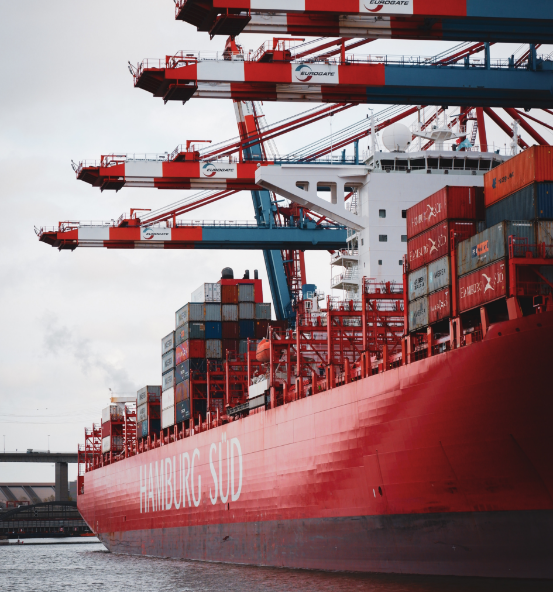AIS MARITIME SOLUTION SINGAPORE PTE. LTD.
Accelerate your maritime accounting processes with our proven experience and solutions
TRANS-Series is an ERP solution that integrates the core operations of the shipping industry, with a focus on accounting systems. All systems work together seamlessly to not only improve the efficiency of day-to-day operations, but also to speed up the processing of accounts, optimising the management efficiency of the company as a whole.
With the ever-changing business environment of the maritime industry, this solution provides a more efficient and timely way of visualising the business situation.
Read More Download Brochure


VIEW
Our Solution

01Maritime Accounting
Best maritime accounting system backed with a comprehensive process of research & development
Product Info

03Chartering & Operating
Highest grade mission incorporated business systems for Chartering and Operating.
Product Info
04Bill Of Lading Management
Integrated mission-critical business system for Bill Of Lading Management.
Product Info

06Maritime Account BPO Service
Accounting Information System for Shipping Companies TRANS-Account Introduction Case Study Interview
Product InfoWORKFLOW
Implementation
Flow
We provide one-stop service from current business analysis by shipping specialists to introducing support and maintenance support after production.
Contact Us
Press the request demo button to reach out.

Hearing/Analysis
We will contact you to understand your business.

Demonstration
We will give you a demonstration of the system, focusing on the issues we have discussed with you beforehand, so that you can get an idea of what the new system will look like. We will provide you with concrete solutions to your problems and examples of how other companies are using the system, so that we can make effective proposals that meet your needs.

Contract/Kickoff
We will first provide you with an estimate of the overall cost of the system implementation project (license fees, implementation support costs, etc.). At the kick-off of the project, we will sign a contract for the requirements definition phase. At the kick-off, we will establish a project structure and a common understanding of the objectives of the system implementation, the overall schedule and the schedule of meetings for the requirements definition phase.

Requirement/Definition
In the requirements definition phase, we will interview you about your as-is (current) business flow, identify the current business issues, and conduct a FIT & GAP analysis with TRANS products. We will then provide you with a To-Be (post-implementation) vision of the new system, including a business flow chart, journal patterns and linkages with external systems, as well as a proposal on how to achieve the GAP part (operational support and UI image if customization is required). For other non-functional requirements, we will provide a definitive estimate for the subsequent phases after defining the requirements based on testing, training and migration policies.

Master Data Setting
We will set up various masters to suit the new system operation methods discussed in the requirements definition phase. Our support consultants will assist you in setting up the masters to ensure that you get the most out of the system. We will also provide you with an initial master registration sheet which you can fill in and upload to the system to reduce the workload.

Design/Development
The implementation is based on the UI image created in the requirements definition phase. The development is done using standardized frameworks in the TRANS product, which allows us to develop the product in a shorter period of time than normal contract development. The release of the product is fully tested by our quality control department to ensure the quality of the product.

Testing/Installation
Once the master configuration and system usage environment has been established, end-user testing will take place until the system goes live. During this time we can also carry out a final review of the master configuration. In addition to confirming that there are no operational issues in accordance with the new business flowchart discussed in the requirements definition phase, we will also confirm that there are no operational issues in each of the transaction patterns (test cases) that we have identified in advance.

Training
We will train your end users in the operation of the system to avoid any confusion once it is live. The more proficient they are, the smoother the transition to the new system will be. We can also support you in preparing training manuals and operational manuals as required. We can also support you with training programmes for remote locations, overseas offices, foreign users and user groupings.

Migration/Go-live
When the system is up and running, your staff will be temporarily overloaded with questions, and our support team will be on hand to assist you as required until the system is stable and during your first financial year. In the case of accounting systems, data can be migrated by creating the migration data in accordance with the journal data import format.

Operation/Maintenance support
By signing an annual maintenance and support contract, our maintenance and support team will be your dedicated point of contact and will respond to your enquiries by phone or email. In addition, a license is provided free of charge for version upgrades and new functions of the product version. Depending on the customer's environment, remote maintenance can be carried out quickly.
VIEW
Our Blog
Receivable Management – A Complete Billing Platform
What are Receivables? Receivables are the dues a customer owes to the business, in exchange of services s/he gets from.....
Read MoreFixed Asset Schedule
This fixed assets schedule is important to maintain because it is highly critical in understanding the accounts of the company......
Read MoreBunker Calculation, Formula and Example
Such reading and evaluations require formula-oriented calculations while considering those dynamic factors and varying inputs. Bunker calculation is one of.....
Read More






